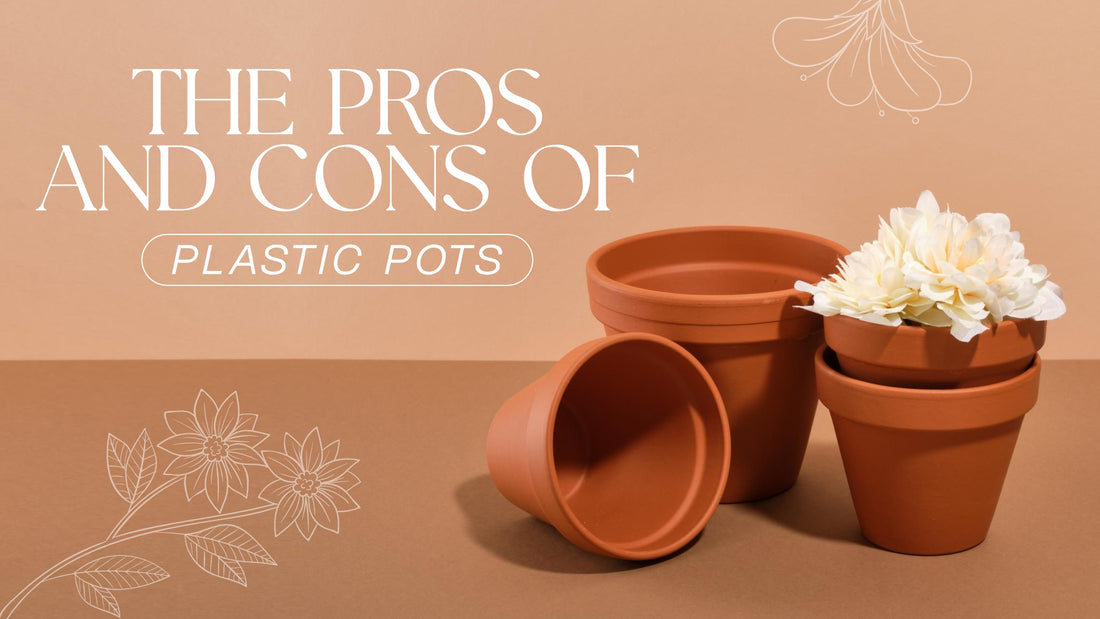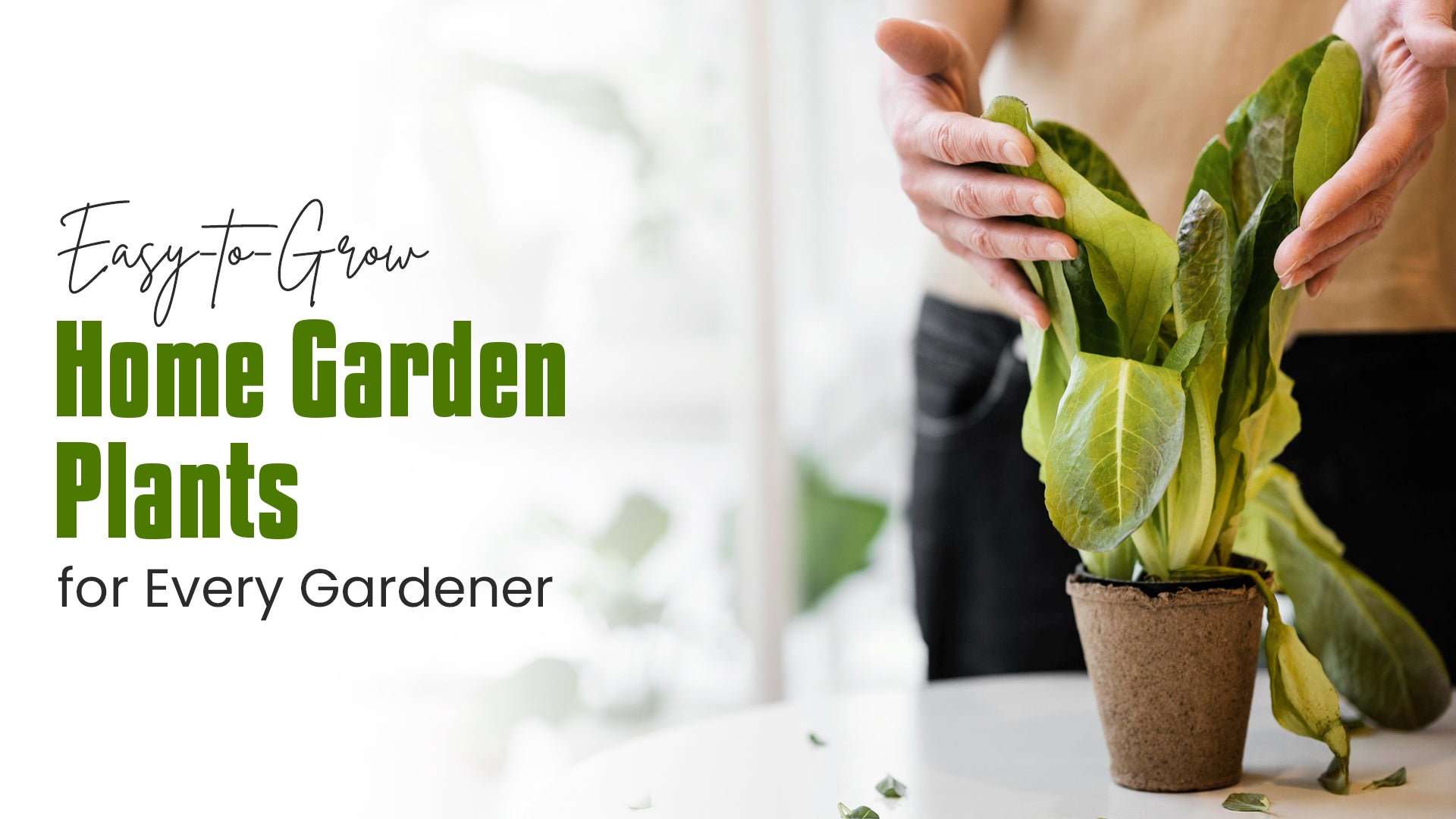
The Pros and Cons of Plastic Pots
Plastic pots have become a staple in gardening and plant care across India. Their convenience, affordability, and wide availability make them a popular choice for both novice and experienced gardeners. However, the growing concern about environmental impact and potential drawbacks to plant health has prompted a closer look at the pros and cons of using plastic pots.
The Advantages of Plastic Pots
Plastic pots offer several benefits that contribute to their popularity:
- Lightweight and Portable
One of the most significant advantages of plastic pots is their lightweight nature. This makes them incredibly easy to handle and transport, whether you're moving plants indoors or outdoors, creating hanging gardens, or simply rearranging your indoor plant decor.
- Cost-Effective
Compared to other pot materials like ceramic or terracotta, plastic pots are generally more budget-friendly. This makes them an attractive option for those starting out in gardening or looking to grow a large number of plants without breaking the bank.
- Durability
Plastic pots are known for their durability. They are resistant to breakage, making them a practical choice for households with children or pets. Additionally, their longevity can save you money in the long run by reducing the need for frequent replacements.
- Diverse Range
Plastic pots come in a vast array of shapes, sizes, and colors. This versatility allows you to find the perfect pot to suit your plant's specific needs and your personal aesthetic preferences. Whether you are looking for a small pot for a succulent or a large planter for a palm tree, there's a plastic pot to fit the bill.
- Water Retention
Some plastic pots are designed with features that help retain moisture, reducing the frequency of watering. This can be beneficial for plants that prefer consistently moist soil, especially during dry periods.
The Drawbacks of Plastic Pots
While plastic pots offer several advantages, it is important to consider their potential drawbacks:
- Environmental Impact

The production of plastic, including plastic pots, contributes to pollution and greenhouse gas emissions. Moreover, plastic takes hundreds of years to decompose, making it a significant environmental concern.
- Poor Breathability
Plastic is a non-porous material, which means it doesn't allow for adequate airflow to the plant's roots. This can lead to issues like root rot, as excess moisture becomes trapped in the soil.
- Overheating
Dark-colored plastic pots can absorb heat from the sun, causing the soil temperature to rise. This can be detrimental to plant health, especially in hot climates.
- Aesthetic Concerns

Some gardeners prefer the natural look of clay or ceramic pots, finding plastic pots to be less visually appealing.
- Recycling Challenges
While recycling efforts have improved, plastic pots are not always readily recyclable. This can contribute to plastic waste accumulation.
Making Informed Choices
When selecting plastic pots, consider the following factors:
- Plant Type
Different plants have varying water and drainage requirements. Choose a pot that suits your plant's specific needs.
- Climate
In hot climates, opt for light-colored plastic pots to prevent overheating.
- Personal Preference
Consider your aesthetic preferences and how the pots will blend with your garden or indoor decor.
Minimizing Environmental Impact
To reduce the environmental impact of using plastic pots, consider these tips:
- Recycle
If your local recycling facility accepts plastic pots, recycle them when they reach the end of their life.
- Reuse
Repurpose old plastic pots for starting seeds or propagating plants.
- Choose Recycled Plastic
Look for plastic pots made from recycled materials to support sustainable practices.
- Explore Alternatives
Consider using clay, terracotta, or other eco-friendly pot materials.
Use of Plastic Pots in Garden
By carefully considering the pros and cons and implementing sustainable practices, you can make informed decisions about using plastic pots in your garden. Remember, the best pot for your plants is the one that meets their specific needs while minimizing your environmental footprint.
Frequently Asked Questions
1.What are the pros and cons of plastic containers?
Pros of plastic containers:
- Lightweight: Easy to carry and handle.
- Durable: Resistant to breakage.
- Affordable: Generally cheaper than other materials.
- Versatile: Available in various shapes and sizes.
- Waterproof: Protects contents from moisture.
Cons of plastic containers:
- Environmental impact: Non-biodegradable and contributes to pollution.
- Health concerns: Some chemicals in plastic can leach into food or drinks.
- Not always recyclable: Many plastic containers end up in landfills.
- Aesthetics: Not as visually appealing as glass or metal containers.
2.What are the cons of plastic pots?
Cons of plastic pots:
- Environmental impact: Plastic production and disposal harm the environment.
- Poor breathability: Can restrict airflow to plant roots, leading to root rot.
- Overheating: Dark-colored plastic pots can absorb heat, damaging plant roots.
- Lack of aesthetics: Some prefer the look of clay or ceramic pots.
- Recycling challenges: Plastic pots are often difficult to recycle.
3.Are plastic pots eco-friendly?
No, plastic pots are not eco-friendly. Their production and disposal contribute to pollution and climate change. While some plastic pots are made from recycled materials, the overall environmental impact remains significant. It is better to choose biodegradable or reusable alternatives like clay, terracotta, or coconut coir pots.
4.What are the pros and cons of plastic material?
Pros of plastic material:
- Lightweight: Reduces energy consumption in transportation.
- Durable: Resistant to breakage and damage.
- Versatile: Can be molded into various shapes and products.
- Affordable: Often cheaper than other materials.
- Waterproof: Protects items from moisture.
Cons of plastic material:
- Environmental impact: Non-biodegradable and contributes to pollution.
- Health concerns: Some plastics contain harmful chemicals.
- Recycling challenges: Not all plastic can be recycled effectively.
- Aesthetics: Often seen as less appealing than natural materials.
- Dependence on fossil fuels: Plastic production relies on non-renewable resources.






